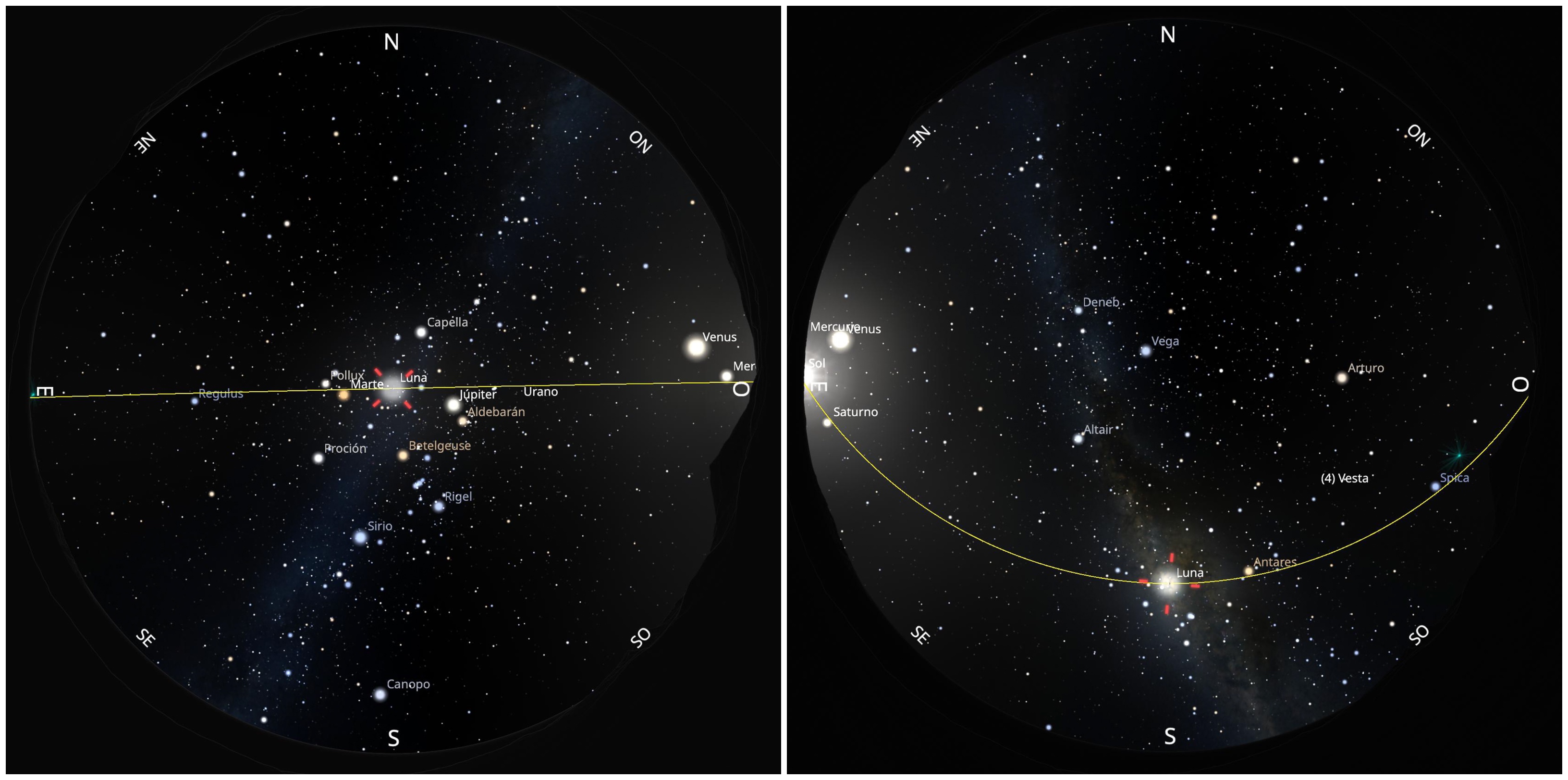Is it just me, or has the Moon been higher in the sky lately? Yes, but that's not all. In just two weeks, the Moon has gone from being very high in the sky to barely rising above the southern horizon. How is this possible? Is this normal?
Being at latitude 28 (Canary Islands) on a planet inclined 23.5 degrees to its orbit around the Sun, together with a satellite whose orbit is inclined approximately 5 degrees, is nothing short of a coincidence. But this coincidence means that only on rare occasions, every 18.6 years, does the Moon cross the sky of the Canary Islands practically vertically. Further north (latitudes 29 degrees north or higher, such as on the Iberian Peninsula), the Moon will never cross the meridian through the celestial north, while further south this phenomenon is common, becoming more frequent the closer one gets to the Earth's equator (the phenomenon is symmetrical in the southern hemisphere).

Twice a year, we usually refer to the solstice (summer and winter) to define the times of the year when the Sun reaches its greatest displacement towards the north or south in the celestial sphere. In the case of the Moon, this extreme position is called a lunastice, and it occurs approximately every two weeks! But unlike the Sun, which always reaches ±23.5 degrees, the Moon gradually moves between ±18.4 degrees (minor lunastice) and ±28.7 degrees (major lunastice) every 9.3 years (in an 18.6-year cycle).
This year is one of those years in which we were able to observe maximum displacement, particularly on 7 and 22 March, which reached 28.7 and -28.7 degrees, respectively, in relation to the celestial equator. This means that it crossed the celestial meridian vertically in the first case, and did not rise more than 32 degrees above the southern horizon in the second. The process will continue to be significant throughout the year, gradually decreasing in amplitude until it reaches the next minor lunastice in 2034. During this period, the Moon has crossed (and will continue to cross) the meridian to the north on only 26 occasions, representing less than 0.4% of the total. In case you are curious, the next occurrences will be on 12 October at 06:39*, 29 January 2026 at 22:29* and 25 February 2026 at 20:19*. The Moon will not pass so high in the sky again until 2043. The sky is definitely not immutable; it just moves at its own pace.
It should be noted that lunastices are quite obvious astronomical events for anyone who observes the sky carefully. Major lunastices involve a difference in the height of the Moon of about 57 degrees in just two weeks, while in minor ones it is ‘only’ 36 degrees. This knowledge was well known to ancient civilisations, such as the Babylonians and the Greeks. Why is it that most of the population today is unaware of phenomena such as this? I encourage you to look up and enjoy the sky whenever you have the opportunity.
* Steps above the Teide Observatory, Tenerife. Approximately 12 minutes earlier in Lanzarote, about 6 minutes later in La Palma or El Hierro.

